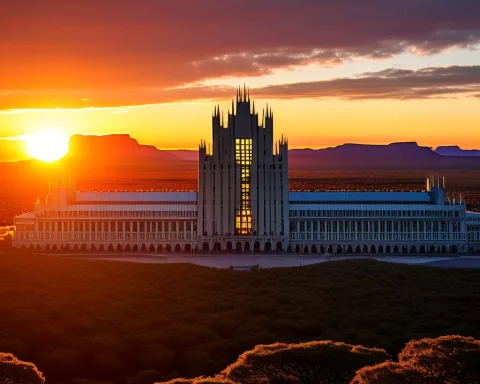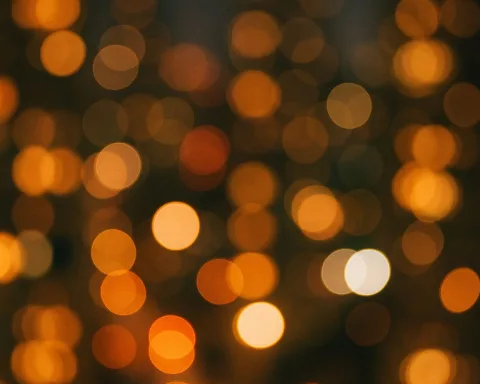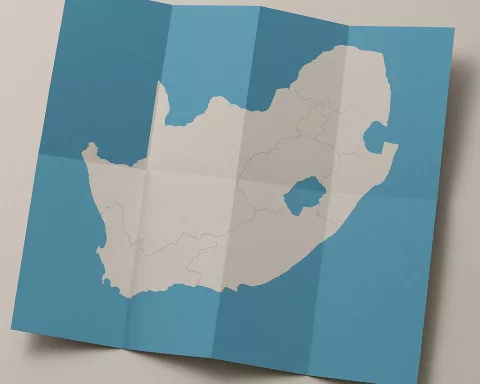South Africa’s Air Force is in crisis, with over half of its aircraft non-operational due to a shortage of spare parts and budget limitations. Combat aircraft like the Gripen and Rooivalk attack helicopters are most affected, leaving the country’s airspace vulnerable in times of crisis. The crisis is blamed on mismanagement, neglect, and a lack of political will. A significant investment, efficiency improvements, and collaboration with international partners are needed to restore the air force’s strength and ensure the nation’s safety.
What is the current state of South Africa’s Air Force?
Over 53% of the South African Air Force’s aircraft are non-operational due to a shortage of spare parts and budget limitations. This leaves the country’s airspace vulnerable in times of crisis, with combat aircraft such as the Gripen and Rooivalk attack helicopters most affected. The crisis is blamed on mismanagement, neglect, and a lack of political will. Significant investments, efficiency improvements, and collaboration with international partners are needed to restore the air force’s strength and ensure the nation’s safety.
A Chilling Reality: South Africa’s Grounded Fleet
South Africa’s national security faces a severe challenge as more than half of its air force aircraft are grounded. Recent disclosures by Defence Minister Thandi Modise reveal that a staggering 53% of the South African Air Force’s (SAAF) aircraft are non-operational, leaving the country’s airspace extremely vulnerable in times of crisis. This article examines the reasons behind this alarming situation, the potential consequences of a weakened air force, and the pressing need for swift action.
The shocking revelation emerged in response to a parliamentary query from DA Member of Parliament Kobus Marais, who also serves as the DA Shadow Minister of Defence and Military Veterans. Out of the 388 aircraft in the SAAF’s fleet, the figures provided by Minister Modise indicate a distressing state of affairs for South Africa’s defense capabilities.
Of particular concern is the operational status of only 2 out of the 26 Gripen fighter jets and a mere 3 out of the 24 Hawk aircraft. The primary cause of this dire situation is a shortage of spare parts and budget limitations that prevent essential repairs from being carried out.
The Root of the Crisis: Mismanagement, Neglect, and Lack of Political Will
Due to insufficient resources, over half of the air force’s fleet is grounded, leaving them ineffective in the face of a national security threat. The responsibility of ensuring South Africa’s safety now falls upon a small fraction of what was once a formidable air force.
DA Shadow Minister Kobus Marais blames this crisis on the ANC government’s mismanagement, absence of political will, and neglect. He states, “Our nation’s combat readiness has deteriorated to the point where it is no longer a mere concern; it has escalated into a national crisis.” In today’s global climate, any weakness in a country’s defense capabilities presents a significant risk to its national security.
Alarmingly, combat aircraft, which are vital in protecting South Africa’s territorial integrity, are among those most affected. These include the Oryx, Rooivalk attack helicopters, BK 117 helicopter, and the LUH 109. The grounding of these aircraft is particularly worrisome, as they are crucial in responding to security threats and maintaining the nation’s sovereignty.
The Path to Recovery: Investment, Efficiency, and Collaboration
The current state of the SAAF poses severe consequences for South Africa’s national security, global reputation, and the morale of its armed forces personnel. The necessity to address this crisis is undeniable as the world grows increasingly volatile and hostile.
To remedy this situation, significant investments in the defense sector are required, focusing on acquiring spare parts for grounded aircraft and allocating funds for crucial repairs. Additionally, a comprehensive review of current management and decision-making processes within the defense sector is essential to identify and eliminate inefficiencies and neglect.
Enhancing the SAAF’s capabilities goes beyond financial investment; it also necessitates restoring political will and renewing commitment to national security. The government must prioritize the defense sector, recognizing its importance in preserving the nation’s sovereignty and stability.
Collaborative efforts with international partners should also be considered to share best practices, access resources, and develop contingency plans for addressing potential threats to national security. A strong defense apparatus is critical not only for South Africa’s safety but also as an indicator of its dedication to regional and global peace.
The current crisis within the SAAF serves as a stark reminder for the nation to reassess its defense priorities and take the necessary steps to regain its air force’s former strength. As the global landscape continues to shift, South Africa cannot risk being caught unprepared, leaving its airspace unprotected. A well-equipped and combat-ready air force is crucial for ensuring the nation’s safety and maintaining its role as a responsible and reliable global player.
In summary, the alarming state of South Africa’s air force is a deeply concerning issue that requires immediate attention. This crisis results from mismanagement, the absence of political will, and neglect, leaving the SAAF in a vulnerable position. It is crucial for the government to address these problems and invest in the restoration of the nation’s air force to prevent potential disaster and uphold South Africa’s commitment to regional and global security.
1. What is the current state of South Africa’s Air Force?
Over 53% of the South African Air Force’s aircraft are non-operational due to a shortage of spare parts and budget limitations, leaving the country’s airspace vulnerable in times of crisis. Combat aircraft such as the Gripen and Rooivalk attack helicopters are among the most affected.
2. What is the cause of the crisis in South Africa’s Air Force?
The crisis is a result of mismanagement, neglect, and a lack of political will. The ANC government is blamed for the crisis by the DA Shadow Minister of Defence and Military Veterans, Kobus Marais.
3. What are the consequences of a weakened air force?
A weakened air force poses a severe threat to national security, global reputation, and the morale of armed forces personnel. In today’s global climate, any weakness in a country’s defense capabilities presents a significant risk to its national security.
4. What aircraft are most affected by the crisis?
Combat aircraft like the Gripen and Rooivalk attack helicopters are among the most affected, leaving the country’s airspace vulnerable in times of crisis.
5. What is the path to recovery for South Africa’s Air Force?
To recover, significant investments in the defense sector are required, focusing on acquiring spare parts for grounded aircraft and allocating funds for crucial repairs. Additionally, a comprehensive review of current management and decision-making processes within the defense sector is essential, as well as restoring political will and renewing commitment to national security.
6. What is the importance of restoring South Africa’s air force?
A well-equipped and combat-ready air force is crucial for ensuring the nation’s safety and maintaining its role as a responsible and reliable global player.
7. What collaborative efforts should be considered to address the crisis?
Collaborative efforts with international partners should be considered to share best practices, access resources, and develop contingency plans for addressing potential threats to national security.
8. Why is the crisis in South Africa’s Air Force urgent?
The current crisis within the SAAF serves as a stark reminder for the nation to reassess its defense priorities and take the necessary steps to regain its air force’s former strength. As the global landscape continues to shift, South Africa cannot risk being caught unprepared, leaving its airspace unprotected.












